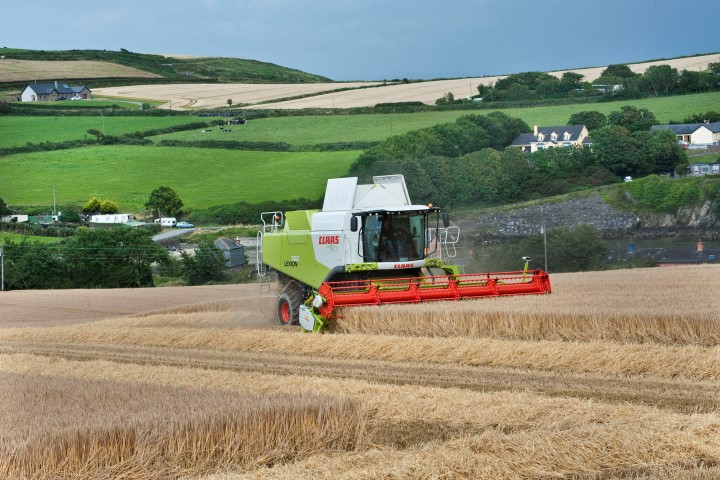Spring barley, the 2013 summer harvest and global diet trends were on the agenda when Agriland talked to Jim O’Mahony, Crops Specialist for Teagasc.
“2012 was a difficult year from the point of view of bringing in harvest,” says Jim O’Mahony, “worse than expected.”
But, as some of our summer crops have already fallen under the harvesting blade, O’Mahony says that 2013 is proving to be very different from last year. “2013 is the other way around – we had poor crops coming into the summer but we’re ending up with great harvest compared to what we expected.
“The harvest is easier to bring in because of the warm weather. The yields are exceeding expectations because of good weather in June and July. And also, the rain in most cases came at the right time. We had a bit of drought in early summer, early June. The sunshine in April, May, June and July was well above average. This is what’s driving these good yields.”
Some crops have already been harvested, and are already breaking records: “The winter barley would be first and that’s finished. That’s been very satisfactory. It looks like we have a record yield for that crop. It’ll yield just as well as winter wheat and will be about ½ tonne to the acre more than the average yield for that crop over the last decade. The average yield was 3.3 tonnes over the past decade per acre and we expect it to be about 3.8 tonnes per acre.”
Indeed, winter barley looks set to equal, or even surpass winter wheat. “Winter wheat was always the highest yielding crop, but it’ll come out the same [as last year] at best. Winter barley has caught up and costs a lot less to grow than winter wheat. We are of the opinion that it’ll be an increase in winter barley at the expense of winter wheat; sewing winter barley will be underway mid-September.”
“Winter oats was satisfactory, good yields in the order of 3 3/4 tonnes per acre. With regards to spring oats, being harvested now, the yields are variable, and the quality is not as good as the winter oats.”
“In the case of winter wheat, crops are variable. And the yield has been very good, but [there were] some poor yields also, due to root diseases and drought stress on lighter land. Then the big crop for 2013 is spring barley. There’s an increased area of spring barley in 2013 because of the difficulty of sewing winter crops last autumn. Spring barley has close to ¾ of the crop harvested already in the south, say, counties south of Dublin, whereas in the midlands and north-east they could be still up to 50% to be harvested, as we speak. The yields are generally very good for spring barley, but there are some disappointments on the lighter soils, hit by the drought in June. But there are huge yields of spring barley as well – record yields in the Waterford/Kilkenny catchment.”
“Spring barley is satisfactory with most yields to the order of 2 ½ to over 3 tonnes per acre, but some are reporting almost 4tonnes p/a, with small yields being 2 ¼. Most are 2 ½ to 3 tonnes p/a. Spring barley will be occupying over 60% of cereal area in 2013. 60%+ of total spring barley crop is already harvested.”
“80 or 90% of grain produced is for animal feed and the quality is generally excellent. In the case of malting barley the quality is generally excellent.”
Jim acknowledges that not all has been accepted due to high protein levels, “But what has accepted is of excellent quality. Some has been rejected because of high proteins, but what they’ve put into the stores is excellent.”
When speaking of evolving trends, Jim predicts more winter barley to be sewn: “The trend is for more winter barley going into the ground, that’s number one trend. Number two is that there’ll be a move away from continuous wheat to wheat in rotation. The price of oilseed rape has dropped, so it mightn’t be as attractive as this time last year.”
“What I’d say about oats is that it’s a great crop from the point of view of being a break crop to avoid take-all in wheat. So there could be an increase in oats.”
Looking further afield, Jim says that worldwide lifestyle trends will have an effect on Irish tillage eventually. “What was happening regards change of diets in Asia and Africa was that they were eating more meat, which is produced on grains, which was driving the demand for grain. So two things are happening – first up an increased demand for western products, such as meat and milk, and secondly these products create a demand for extra cereal. The main cereal growing crops are Northern Europe, North America, Australia, and to a lesser extent South America. I think it’ll be a minor driver [here] in one year, but over time it could become more important.”
